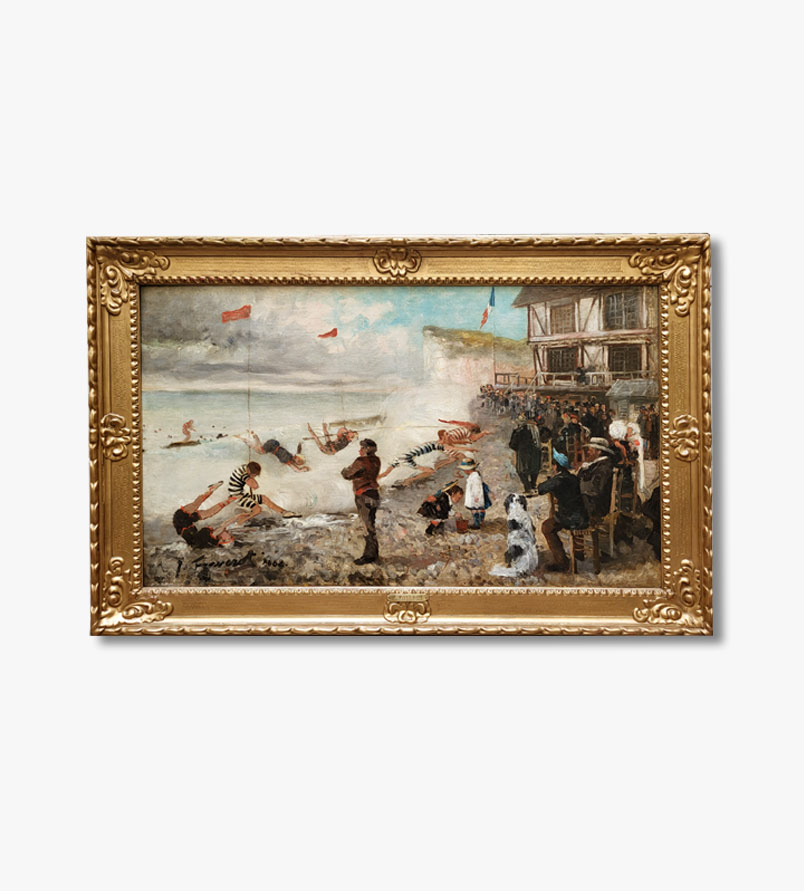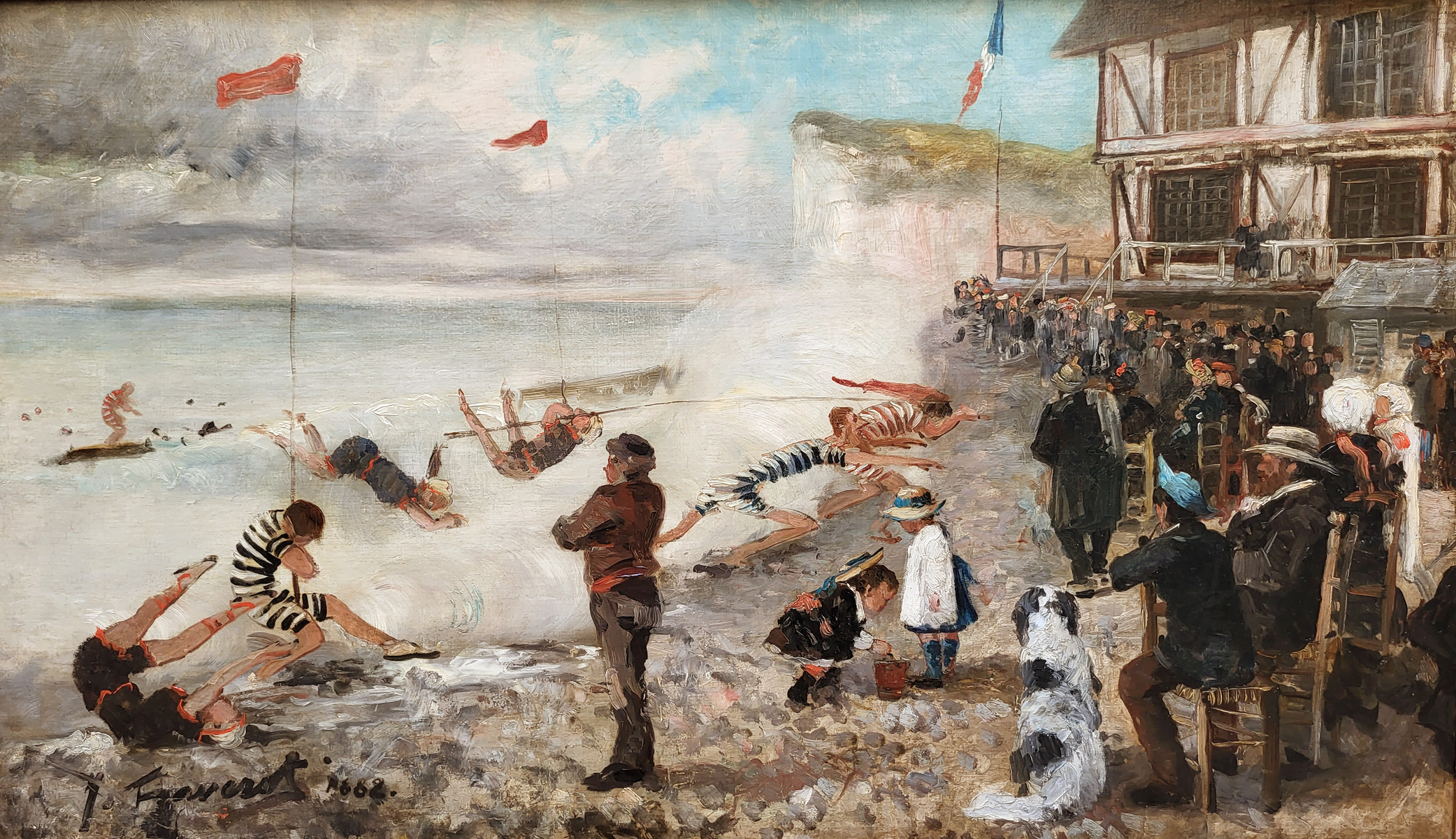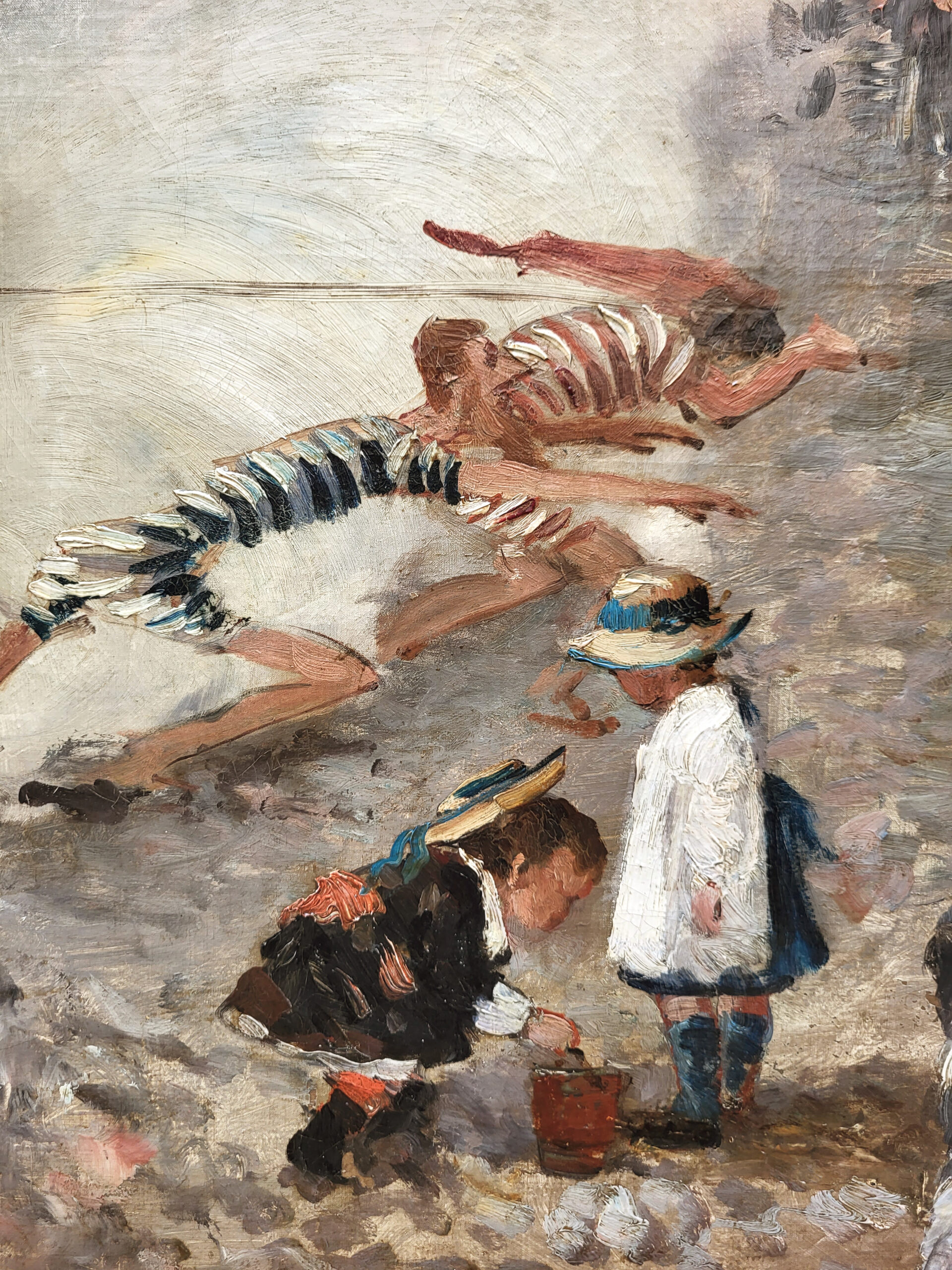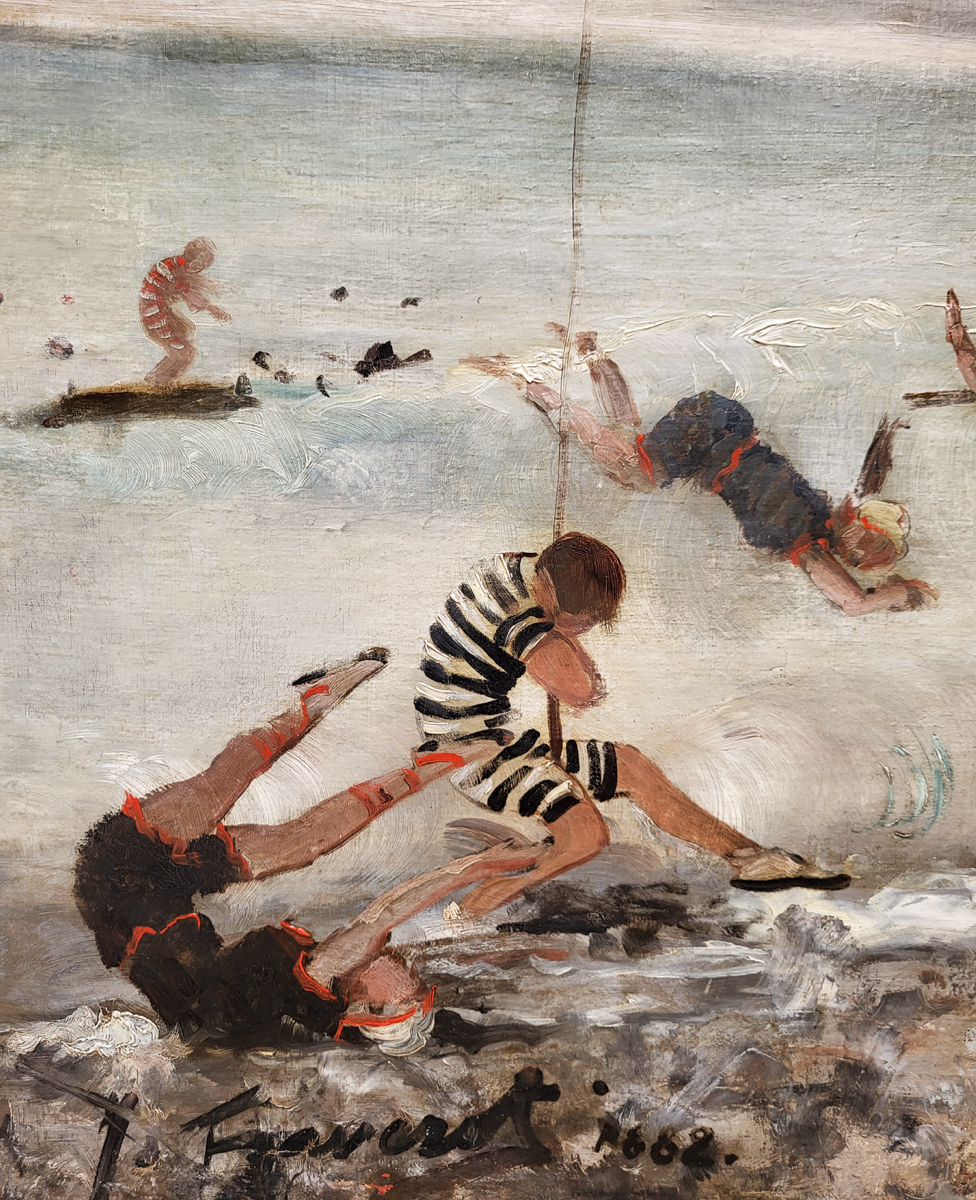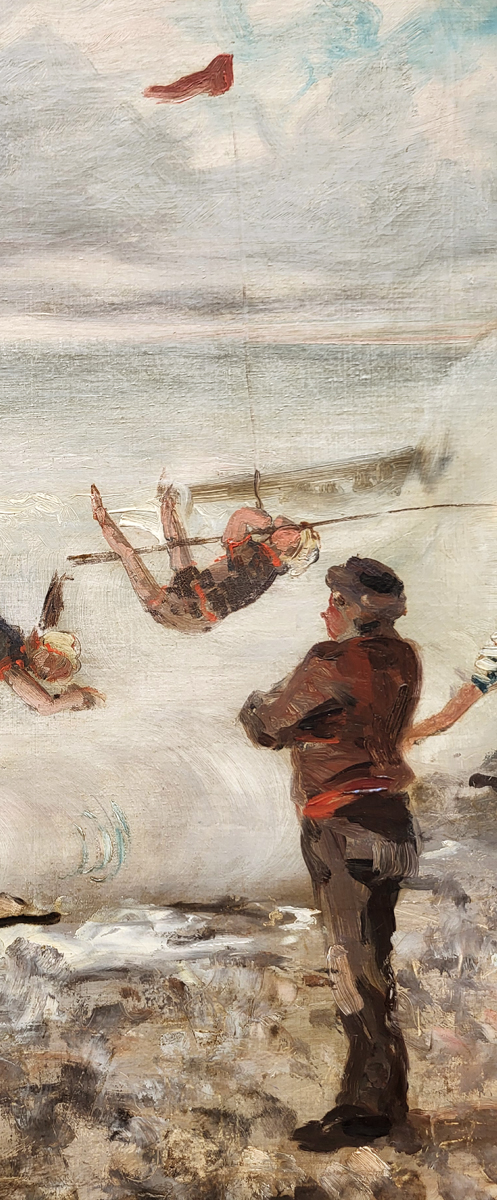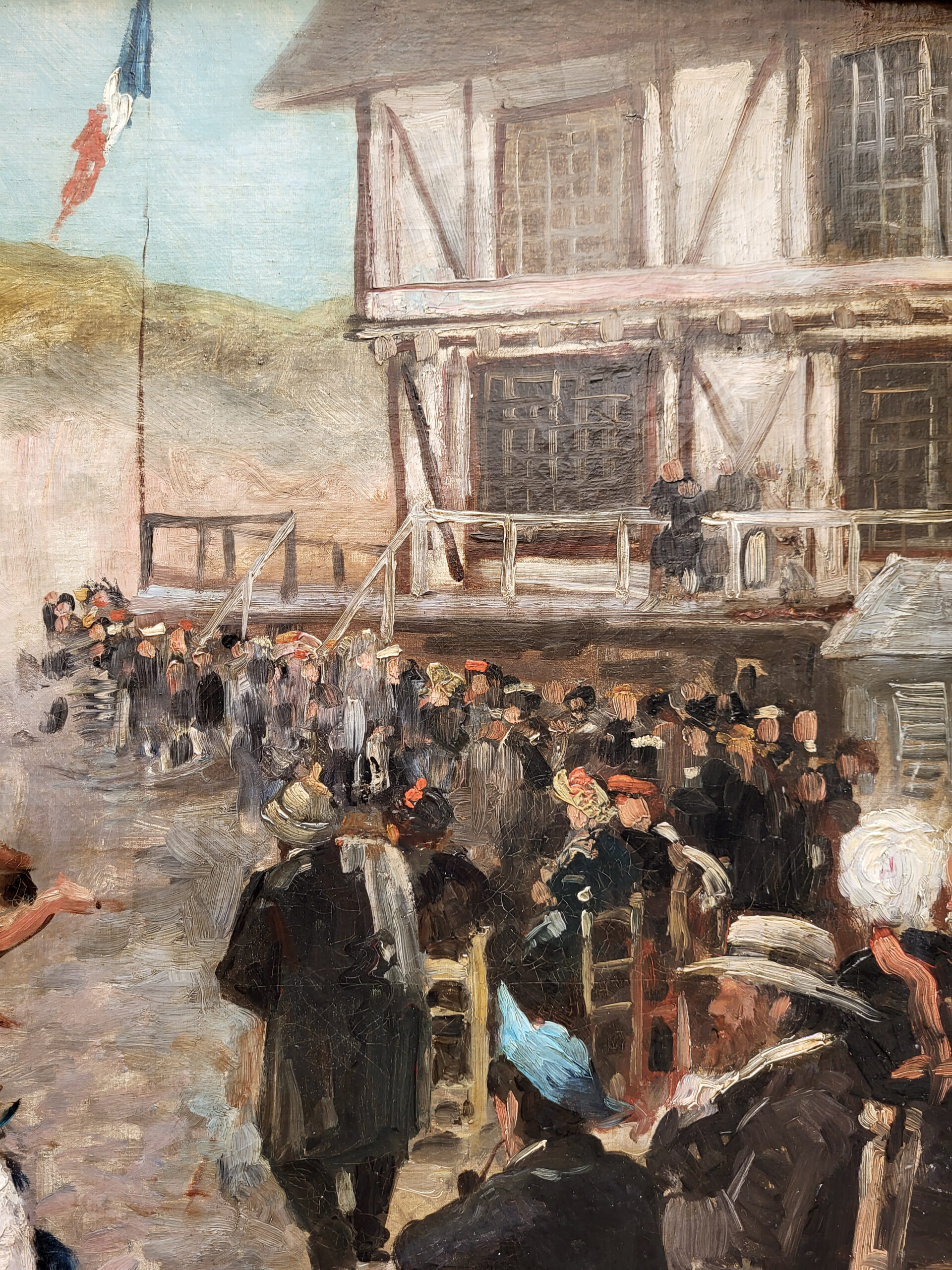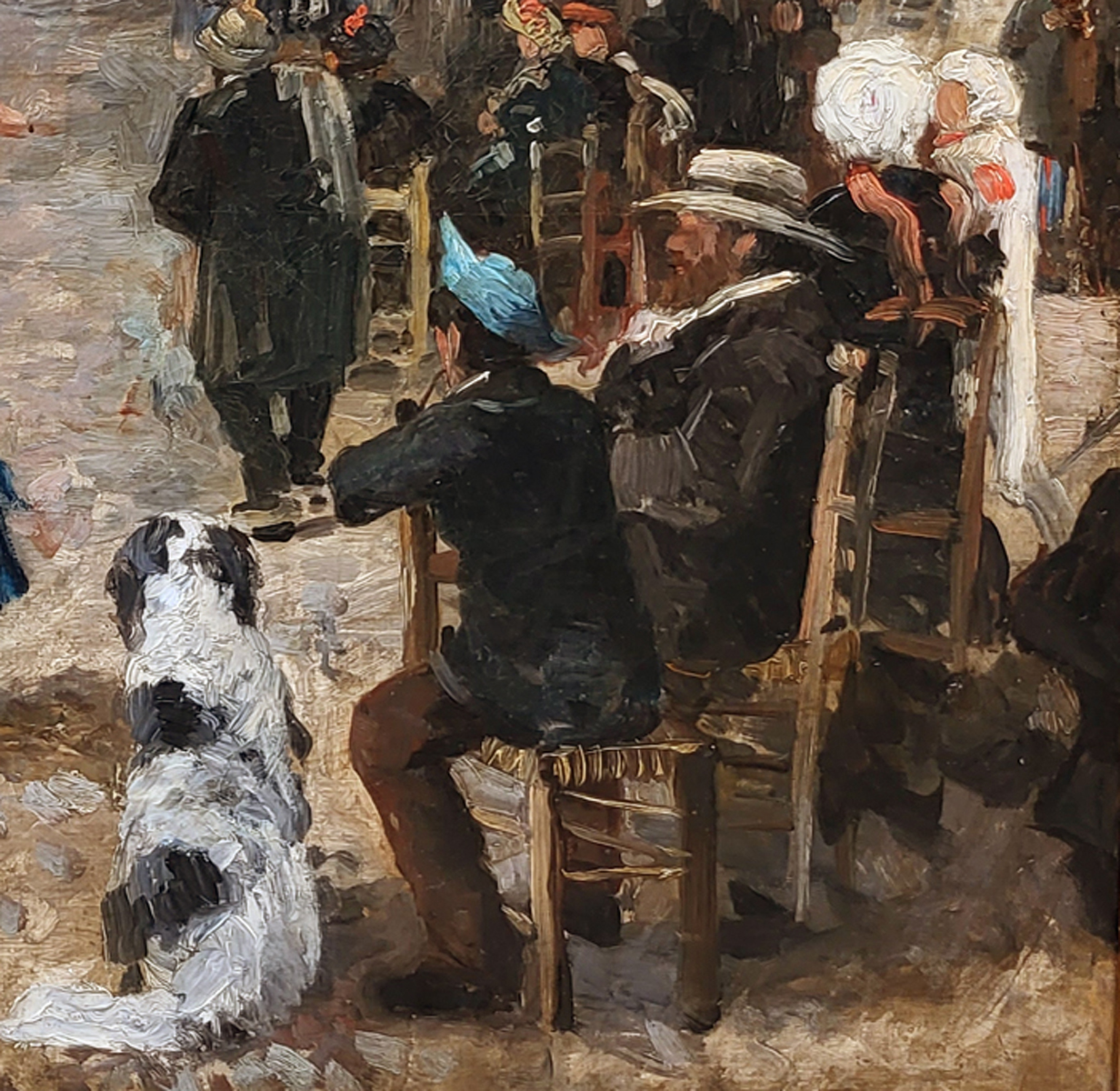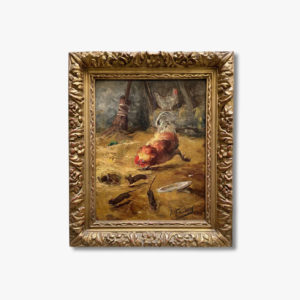Large oil on canvas, L'arivée de la tempête by Joseph FAVEROT
Large oil on canvas, L'arivée de la tempête by Joseph FAVEROT
15.000,00 €
FAVEROT Joseph (1862-1918
French painter, originally from Montmartre, of clowns, genre scenes and animal scenes.
He worked in Gérome's studio. He appeared in Paris at the Salon des Artistes Français from 1887 to 1900, and at the Salon de la Société Nationale des Beaux-Arts.
Further information
| Dimensions | 146 × 97 cm |
|---|
Specializing in animal paintings, particularly of roosters, Faverot is also well known as a painter of clowns, and produces large genre scenes like our canvas.
Faverot was a former circus clown with a very strong and confident taste for drawing.
We owe him genre scenes (acrobatics, dressage) and portraits of famous clowns (Bottom, Boum Boum, Marcilly) performing at the Fernando circus, then the Medrano circus.
He also created frescoes for cabarets such as Le Rat mort at 7 place Pigalle, and for Ernest Lemaire's guinguette in 1887.
He also collaborated with a number of newspapers, such as Le Courrier français, in which he introduced the clown figure that has become his signature.
Our canvas fascinates with its almost cinematic staging, like a silent film about to come to life before our very eyes.
The scene is set in Veules les roses in Normandy, an hour from Le Tréport, and dates from 1882.
Normandy was a tourist mecca at the time, frequented by the upper middle classes. People began to discover the pleasures of the sea: swimming, strolling, showing off, chatting, spying on others with a discreet glance...
The artist perfectly captures this atmosphere, while adding, as he does best, a touch of burlesque.
The bathers, swept away by the oncoming storm, almost look like clowns. Faced with a beach lifeguard who's right in his boots.
The artist brilliantly orchestrates the characters in his painting as if in a circus, creating what we call "comiques de situation".

